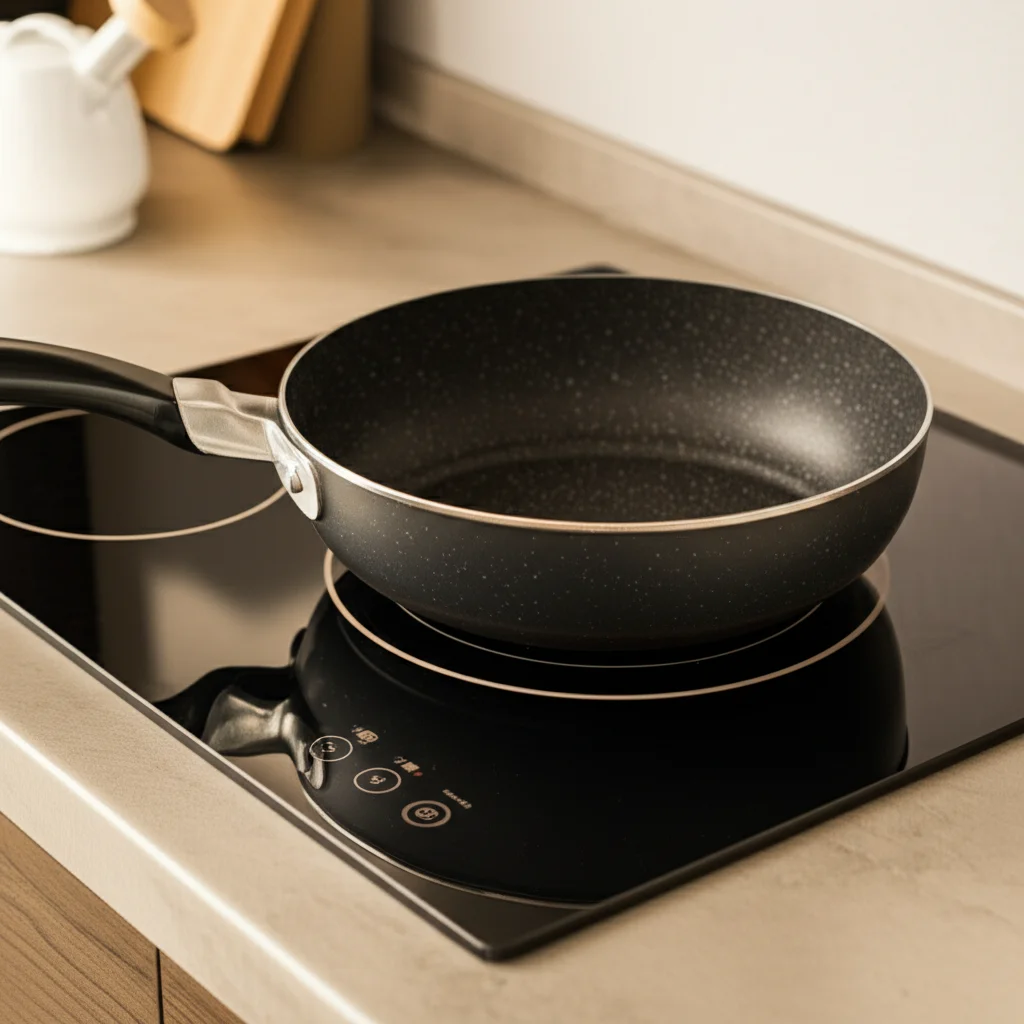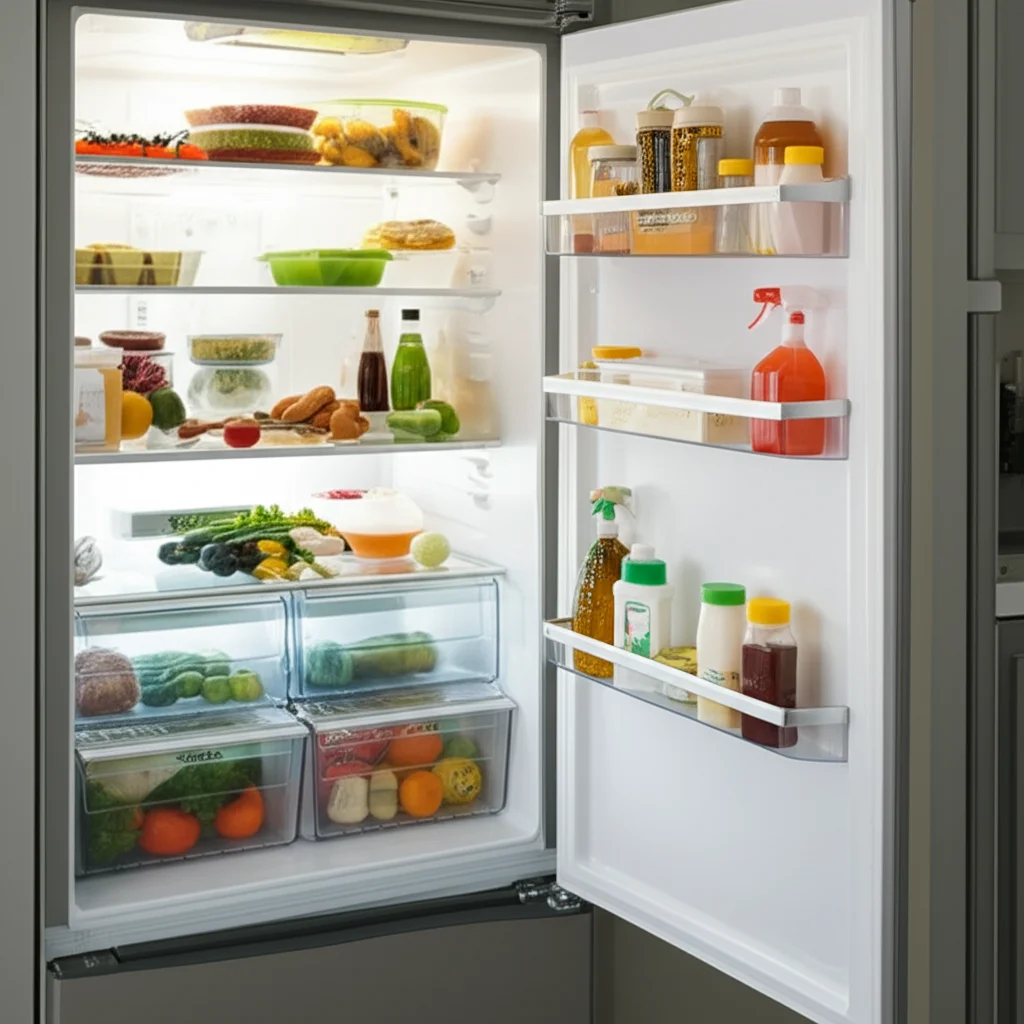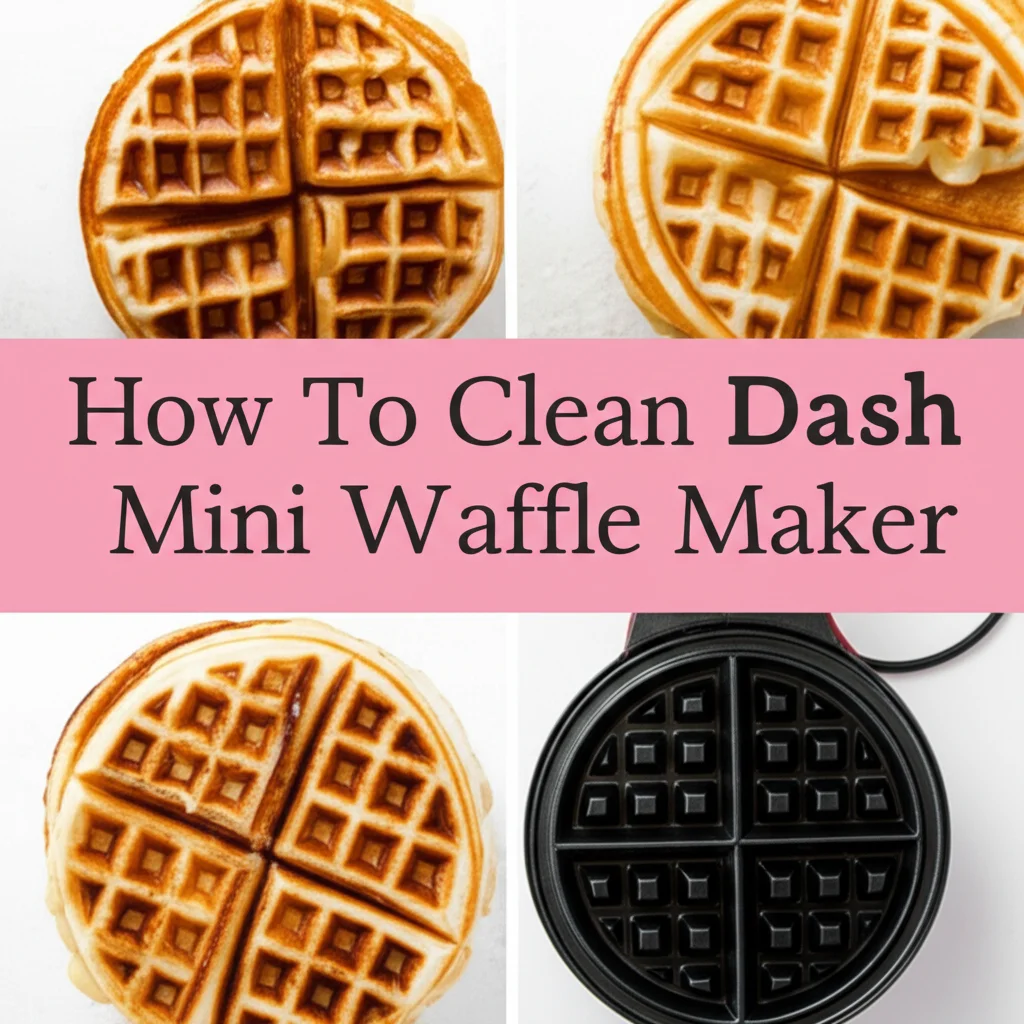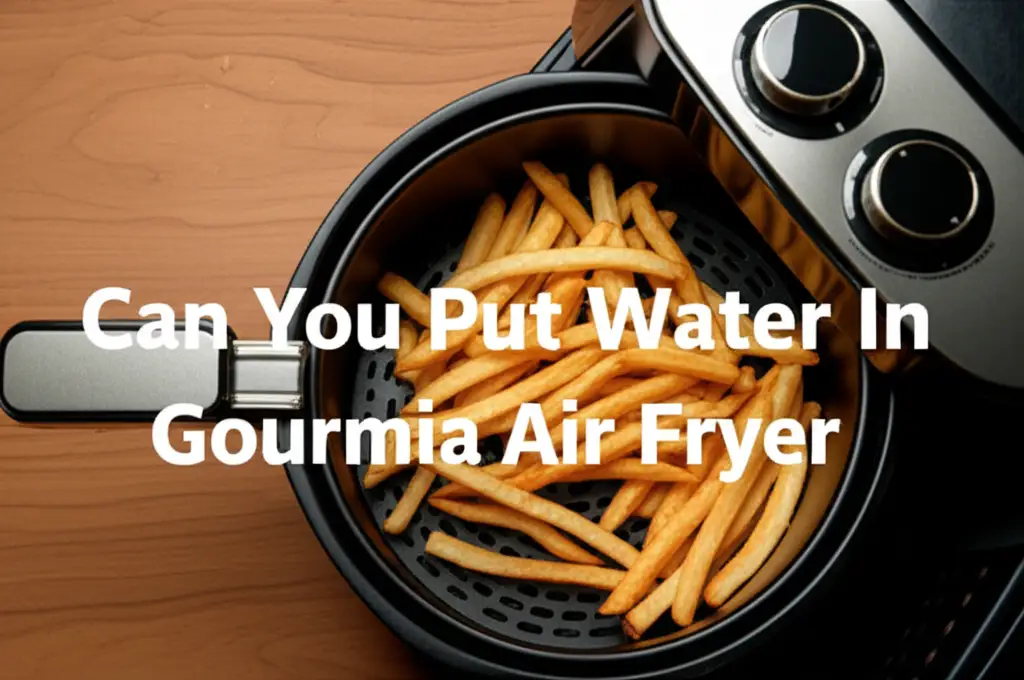· Todd Martin · Kitchen Cleaning, Appliance Maintenance · 19 min read
How To Clean Induction Stove Top

How To Clean Your Induction Stove Top for a Sparkling Finish
My induction stove top is a highlight in my kitchen. Its sleek, flat surface adds a touch of modern elegance. However, maintaining its pristine appearance can sometimes feel like a challenge. Spills, splatters, and burnt-on food marks can quickly mar its smooth surface. Knowing how to clean your induction stove top correctly is essential for keeping it looking new and functioning efficiently.
This guide will walk you through everything. We will cover daily cleaning routines and specific methods for tackling stubborn stains. You will learn the best products and tools to use, along with common mistakes to avoid. By the end, your induction cooktop will gleam, and your kitchen will feel much cleaner.
Takeaway
- Wipe your induction stove top daily with a soft cloth and mild soap for regular maintenance.
- Use baking soda paste and a non-abrasive scrubber for deeper cleaning and tough stains.
- A razor scraper is effective for burnt-on residues, but use it carefully and at a low angle.
- Avoid abrasive cleaners, rough sponges, and excessive water to prevent damage and streaks.
- Prevent future messes by cleaning spills immediately and using appropriate cookware.
How to clean an induction stove top involves gentle daily wiping with a soft cloth and mild soap, followed by a deeper clean using baking soda paste or specialized cooktop cleaner for spills and stains, always ensuring the surface is cool.
Understanding Your Induction Stove Top Surface
Induction stove tops feature a smooth, ceramic glass surface. This material is not just for looks. It allows magnetic fields to transfer heat directly to your cookware. The cooktop itself does not get hot during cooking, only from the residual heat of the pan. This makes it safer and more energy-efficient.
The ceramic glass, while durable, is also susceptible to scratches and certain types of stains. Abrasive cleaners or harsh scrubbing can dull its shine. Knowing its properties helps us choose the right cleaning methods. Proper care ensures its longevity and maintains its elegant appearance. Think of it as a delicate, high-performance surface.
This surface is distinct from traditional coil or gas burners. Its flat, seamless design makes cleanup easier in some ways. However, it requires specific non-abrasive tools and cleaners. You want to lift messes without scratching the delicate glass. This is crucial for its performance and aesthetic appeal.
Many modern kitchens feature these beautiful surfaces. Understanding the material is the first step to proper care. My experience shows that gentle, consistent cleaning works best. It prevents minor issues from becoming major cleaning projects.
- Ceramic Glass Composition: Induction stove tops are made from a special type of ceramic glass. This glass is very strong and resistant to thermal shock. It can handle high heat from cookware without cracking. This material also provides a sleek, reflective surface.
- Heat Transfer Method: Induction technology heats the cookware directly, not the stove top. This means the surface stays relatively cool during cooking. Only the heat from the hot pan transfers back to the glass. This reduces the risk of spills baking onto the surface immediately.
- Vulnerability to Scratches: Despite its strength, the ceramic glass surface can scratch. Dropping heavy pots or dragging abrasive cookware can cause marks. Fine grit or burnt sugar can also cause micro-scratches if not removed carefully.
- Stain Absorption: The non-porous nature of ceramic glass means it does not absorb stains. Spills sit on the surface. This makes them relatively easy to remove if addressed promptly. However, burnt-on residues can bond to the surface.
- Importance of Gentle Cleaning: Because of its susceptibility to scratches, gentle cleaning is paramount. Harsh chemicals or abrasive scrubbers can damage the finish. Using soft cloths and mild cleaners preserves the integrity of the glass. Learning how to clean ceramic stove top and how to clean smooth top stove techniques applies directly here. These surfaces, including those found on many glasstop stoves, benefit from careful methods.
Everyday Cleaning for a Spotless Shine
Daily cleaning is the secret to a perpetually sparkling induction stove top. I make it a habit to wipe down my cooktop after every use. This prevents food particles and light spills from drying and hardening. It takes only a few minutes and saves a lot of effort later. A clean cooktop also encourages a clean kitchen environment.
Start by ensuring your stove top is completely cool. This prevents any cleaner from burning onto the surface. It also ensures your safety. Then, gather your simple cleaning supplies. You likely have them in your kitchen right now.
I find that a quick daily wipe makes a huge difference. It stops grime from building up. This keeps my kitchen looking tidy and ready for the next meal. Consistency is truly key for managing cooktop cleanliness.
- Wait for Cooling: Always ensure your induction stove top is cool to the touch. Cleaning a hot surface can cause cleaners to bake on or evaporate too quickly. It also poses a burn risk. Patience here protects both you and your appliance.
- Gather Supplies: You will need a soft microfiber cloth and a gentle dish soap or general kitchen cleaner. Avoid sponges with abrasive sides. They can scratch the glass surface. Using the right tools prevents damage.
- Wipe Down Loose Debris: First, use a dry cloth or paper towel to wipe away any loose crumbs or food particles. This prevents them from scratching the surface during wet cleaning. Removing solids is a crucial first step.
- Prepare Cleaning Solution: Add a few drops of mild dish soap to warm water in a spray bottle or small bowl. Alternatively, use a non-abrasive glass cleaner or cooktop spray. You want a gentle solution that cuts grease.
- Clean the Surface: Spray or dampen your microfiber cloth with the cleaning solution. Wipe down the entire stove top surface. Use gentle, circular motions to lift away grease and light spills. Pay attention to any visible smudges.
- Rinse and Dry: Dampen a clean, fresh microfiber cloth with plain water. Wipe the stove top again to remove any soap residue. Then, use a dry microfiber cloth to buff the surface until it is completely dry and streak-free. This final step enhances shine.
- Address Fresh Spills Immediately: If a spill occurs while cooking, turn off the burner and let it cool slightly. Then, gently wipe it away with a damp cloth as soon as it is safe to touch. Immediate action prevents burnt-on messes. This approach also applies when you clean your stove top of any type.
Deep Cleaning Your Induction Stove Top: Conquering Grime
Sometimes, daily wiping is not enough. Baked-on food or stubborn grease can accumulate, requiring a deeper clean. I typically deep clean my induction stove top once a week or whenever I notice significant grime. This process helps restore its original shine and keeps it hygienic. It is more involved than daily wiping but still simple.
The key is to use the right non-abrasive ingredients. Baking soda is my go-to for this task. Its mild abrasive quality helps lift tough spots without scratching the delicate glass. Vinegar provides an extra boost for cutting through grease.
This routine prevents major buildup over time. It makes your cooking surface look consistently inviting. A thorough clean ensures your induction stove top remains a centerpiece in your kitchen.
- Ensure Cooling: Just like with daily cleaning, make sure the stove top is completely cool. Safety comes first with any cleaning task. A cool surface prevents damage to the cleaner or burns to your skin.
- Create a Baking Soda Paste: Mix about half a cup of baking soda with a few tablespoons of water. Adjust the water until you have a thick, spreadable paste. This paste is your primary deep-cleaning agent.
- Apply the Paste: Spread the baking soda paste generously over the entire induction stove top surface. Pay extra attention to any stained or greasy areas. You want a visible layer of the paste over the grime.
- Cover with Damp Cloths: Soak a few microfiber cloths in hot water and wring them out so they are damp, not dripping. Lay these warm, damp cloths over the baking soda paste. This helps keep the paste moist and allows it to penetrate the grime.
- Let It Sit: Allow the paste and cloths to sit on the stove top for at least 15-30 minutes. For very stubborn stains, you can leave it for an hour or even overnight. The longer it sits, the more it softens the grime.
- Gently Scrub: Remove the damp cloths. Using a clean, damp microfiber cloth or a non-scratch scrub pad (like a scrub daddy), gently scrub the stove top in circular motions. The baking soda paste will work with your scrubbing to lift the loosened grime.
- Wipe Clean and Buff: Wipe away all the baking soda residue with a clean, damp cloth. Rinse the cloth often. Once all residue is gone, use a dry microfiber cloth to buff the surface to a streak-free shine. This leaves your stove top sparkling. When you perform a deep clean, it’s very similar to how you would clean an induction cooktop effectively.
Tackling Stubborn Stains and Burnt-On Messes
Stubborn stains, like burnt sugar or melted plastic, can be daunting. Regular cleaning methods often fail against these tough messes. I have faced these challenges myself. The key is to approach them with the right tools and techniques. Patience is also very important here.
A dedicated cooktop razor scraper is an indispensable tool for these situations. It is designed to lift hardened residue without scratching the glass. Using it correctly is vital to avoid damage. Never use a standard utility razor blade; always choose one designed for cooktops.
I have found these specific steps to be effective. They remove the most difficult stains while keeping your stove top safe. My goal is to restore the original smooth finish without leaving any marks behind.
- Identify the Stain Type: Different stubborn stains respond to different treatments. Burnt sugar or melted plastic require a razor scraper. Baked-on food might need more soaking time. Understanding the stain guides your approach.
- Cool the Surface Completely: Always ensure the stove top is cold before attempting to remove stubborn stains. Applying a razor scraper to a hot surface is dangerous. It can also worsen the stain or damage the cooktop.
- Apply a Cleaning Agent: For hard, crusty stains, apply a specialized cooktop cleaner or a thick baking soda paste directly onto the stain. Let it sit for 10-15 minutes. This softens the residue, making it easier to remove.
- Use a Cooktop Razor Scraper: Hold the cooktop razor scraper at a very shallow angle, almost flat against the glass (around a 10-20 degree angle). Gently push the blade under the softened stain. Use light, steady pressure to lift the residue. Do not use the corner of the blade. Do not press too hard.
- Scrape in One Direction: Work in one direction, pushing the scraper away from you. Avoid side-to-side motions, as this can lead to scratches. Repeat this process until the bulk of the stain is removed.
- Wipe Away Debris: Once the stain is loosened, wipe away the scraped residue with a damp microfiber cloth. You will see the stain lifting off the surface. Repeat scraping and wiping as needed for complete removal.
- Follow with General Cleaning: After removing the tough stain, clean the entire stove top with your regular daily cleaning method. Use a mild soap and water solution or cooktop cleaner. Buff dry with a clean microfiber cloth for a streak-free finish.
- For Burnt Water Stains: If you have burnt water off your glass stove top, the baking soda paste method works well. For burnt milk from your stove, soak and then gently scrape. These specific stains often require targeted approaches for best results.
Natural Cleaning Solutions for Your Induction Cooktop
I love using natural cleaning solutions whenever possible. They are often just as effective as commercial products. They are also safer for my family and the environment. For induction stove tops, baking soda and white vinegar are a powerful duo. They tackle most messes without harsh chemicals.
Baking soda is a mild abrasive that gently scrubs away grime. White vinegar cuts through grease and leaves a streak-free shine. I have seen impressive results using these simple pantry staples. They are excellent alternatives for everyday cleaning and even some stubborn spots.
Using natural options gives me peace of mind. I know I am not exposing my cooking surfaces to harsh chemicals. It also saves money on specialized cleaners. This approach is simple, effective, and eco-friendly.
- Baking Soda’s Role: Baking soda acts as a gentle abrasive. It helps to loosen and lift dried-on food particles and grease without scratching the delicate glass surface. Its alkaline properties also help neutralize acidic food stains. It is a workhorse for many cleaning tasks.
- White Vinegar’s Role: Distilled white vinegar is an excellent degreaser and deodorizer. It helps dissolve greasy residues and leaves a streak-free finish. Its acidic nature is perfect for breaking down mineral deposits and hard water stains.
- Baking Soda Paste Application: As mentioned for deep cleaning, mix baking soda with a little water to form a thick paste. Spread this paste over the entire cool stove top surface. Allow it to sit for 15-30 minutes, or longer for tough stains.
- Vinegar Spray for Finishing: After gently scrubbing and wiping away the baking soda paste, spray the surface lightly with undiluted white vinegar. The vinegar helps to remove any remaining streaks or residue from the baking soda. It also provides a final polish.
- Wipe and Buff: Immediately wipe down the vinegar with a clean, damp microfiber cloth. Then, use a dry microfiber cloth to buff the surface until it is completely dry and shiny. This ensures a streak-free result.
- For Light Everyday Cleaning: For quick daily cleanups, a spray bottle with a 1:1 mixture of white vinegar and water can be effective. Spray it on, wipe with a microfiber cloth, and buff dry. This is a simple and effective routine.
- Precautions with Vinegar: While vinegar is safe, avoid letting it sit on metal trim or seals for extended periods. Its acidity can cause discoloration over time. Always wipe it off promptly. This ensures all parts of your appliance remain safe. Using vinegar to clean your glass stove top is a proven method for shine and cleanliness.
Choosing the Right Tools and Commercial Cleaners
Selecting the correct tools and cleaners is crucial for induction stove top care. The wrong choice can lead to scratches, streaks, or even permanent damage. I always make sure I have the right supplies on hand before I start cleaning. This prevents any mishaps.
While natural solutions are great, sometimes commercial cleaners are necessary. They are formulated for specific tough jobs. Knowing when to use them and which ones are safe is important. My priority is always protecting the sleek finish of my cooktop.
Investing in quality tools pays off in the long run. They make cleaning more effective and less damaging. A small investment now saves you from costly repairs or replacements later.
- Microfiber Cloths: These are essential. Microfiber cloths are soft, absorbent, and non-abrasive. They pick up dirt and grime effectively without leaving scratches or lint. Keep a separate set for your stove top.
- Non-Scratch Scrub Pads: For areas that need a little more friction, use a non-scratch scrub pad. Look for pads specifically labeled for glass or ceramic cooktops. Avoid green scouring pads or anything labeled abrasive.
- Cooktop Razor Scraper: As discussed, this specialized tool is invaluable for burnt-on messes. Ensure it has a protective cover and is designed for glass or ceramic surfaces. Use it carefully and at a shallow angle.
- Mild Dish Soap: Any gentle dish soap works well for everyday spills and grease. It is effective and readily available. A small amount goes a long way.
- Specialized Cooktop Cleaners: Many brands offer dedicated ceramic and induction cooktop cleaners. These often come as a cream or liquid. They are formulated to cut grease, remove stains, and leave a protective, streak-free shine. Follow product instructions carefully. Brands like Cerama Bryte or Weiman are popular.
- Avoid Abrasive Cleaners: Never use abrasive powders, steel wool, or harsh chemicals like oven cleaner on your induction stove top. These will scratch the glass, damage the finish, and potentially void your warranty. Always check product labels before use.
- Avoid Ammonia-Based Cleaners: While good for glass, ammonia-based cleaners can sometimes leave streaks or residue on cooktops. They may also not be effective against grease. Stick to cleaners formulated for cooktops or simple soap and water.
- Protective Cooktop Polish: Some commercial cleaners also act as a polish. They can leave a thin, protective layer on the glass. This layer helps resist future stains and makes subsequent cleaning easier. Consider this for an extra layer of care.
Preventative Maintenance: Keeping Your Induction Stove Top Cleaner Longer
An ounce of prevention is worth a pound of cure, especially with induction stove tops. Proactive measures can drastically reduce the need for intensive cleaning. I have learned that a few simple habits save me a lot of time and effort in the long run. Keeping my stove top clean is much easier with these practices.
Preventative maintenance protects your appliance. It also maintains its beautiful appearance. A few small changes to your cooking habits can make a huge difference. I find that a clean kitchen encourages more cooking, not less.
These tips help you avoid those tough, caked-on messes entirely. They extend the life of your induction stove top. You will enjoy a gleaming cooktop with minimal fuss.
- Wipe Spills Immediately: This is the golden rule. As soon as a spill occurs, and it is safe to do so (i.e., the surface has cooled slightly), wipe it up with a damp cloth. This prevents food from drying and hardening onto the surface. My experience shows immediate action is the best action.
- Use Proper Cookware: Induction cooktops require magnetic cookware. Ensure your pots and pans have smooth, flat bottoms. Rough or warped cookware can scratch the glass surface. Using the right tools protects your appliance.
- Avoid Overfilling Pots: Do not fill pots to the very brim, especially when boiling liquids. This reduces the chance of boil-overs and messy spills. Leave enough space for expansion and bubbling.
- Place Lids on Pots: Using lids helps contain splatters and steam. This keeps sauces and other liquids from splattering onto the cooktop. It also speeds up cooking, which is a bonus.
- Use Heat Diffuser Mats (Carefully): Some users place thin silicone mats designed for induction cooktops between the pan and the stove top. These can catch spills and prevent scratches. Ensure they are specifically rated for induction use and high heat. Always check your stove top manual first.
- Clean Cookware Bottoms: Ensure the bottoms of your pots and pans are clean before placing them on the stove top. Food residue or grease on cookware bottoms can transfer to the cooktop and burn on. This creates more work for you.
- Avoid Dragging Cookware: Instead of dragging pots and pans across the induction surface, lift them. This simple action prevents scratches. Treat your cooktop gently like any other smooth glass surface.
- Regular Light Cleaning: Stick to your daily wiping routine. Consistent light cleaning prevents minor issues from becoming major cleaning projects. It is much easier to wipe away fresh smudges than tackle baked-on grime. This is key to keeping your stove clean overall.
Common Mistakes to Avoid When Cleaning Your Induction Stove Top
Learning how to clean your induction stove top effectively also means knowing what not to do. I have seen many common errors that lead to scratches, dullness, or even damage. Avoiding these mistakes is just as important as following the correct cleaning steps. It protects your investment and keeps your cooktop looking its best.
These pitfalls are easy to fall into if you are not careful. Knowing them helps you sidestep potential problems. My advice is to always err on the side of caution. Gentleness and the right products are your best friends here.
Protecting your cooktop from harm ensures its longevity. It maintains its sleek appearance and efficient function. I always remind myself to be mindful of these common cleaning errors.
- Using Abrasive Cleaners or Scouring Pads: This is the most common and damaging mistake. Products like Comet, Bar Keepers Friend (unless specifically for glass cooktops and used gently), steel wool, or green scouring pads will scratch the delicate ceramic glass surface. These scratches are often permanent.
- Cleaning a Hot Surface: Never apply cleaners or water to a hot induction stove top. The sudden temperature change can cause thermal shock, potentially cracking the glass. Cleaners can also bake onto the surface, creating more stubborn stains. Always let it cool completely.
- Using Knives or Sharp Objects to Scrape: While a dedicated cooktop razor scraper is safe when used correctly, never use a kitchen knife, metal spatula, or any other sharp object not designed for cooktops. These can gouge or deeply scratch the glass.
- Ignoring Spills: Allowing spills to dry and bake onto the surface makes them significantly harder to remove. Sugary spills are particularly problematic as they can caramelize and bond to the glass. Wipe up spills as soon as it’s safe to touch.
- Using Excessive Water: While some water is needed for cleaning, avoid saturating the cooktop. Excess water can seep into control panels or electrical components. Always wring out cloths well and dry the surface thoroughly.
- Leaving Cleaning Residue: Failing to thoroughly rinse and buff the stove top after cleaning can leave behind cleaner residue. This residue attracts dirt, can appear streaky, or even burn onto the surface during subsequent cooking sessions. Always buff until dry and shiny.
- Using the Wrong Type of Razor Blade: Only use razor blades specifically designed for glass cooktop scrapers. Standard utility or box cutter blades are too thick or not angled correctly. They can cause damage.
- Over-scrubbing with Force: Even with non-abrasive cleaners or pads, excessive force can damage the surface. Let the cleaning agent do the work. Use gentle, consistent pressure, not brute force.
FAQ Section
Can I use abrasive cleaners on my induction stove top?
No, you should never use abrasive cleaners or scouring pads on your induction stove top. Products like steel wool, harsh powders, or rough sponges can cause irreversible scratches on the delicate ceramic glass surface. Always opt for gentle, non-abrasive cleaners and soft cloths to maintain the cooktop’s smooth finish.
How often should I clean my induction stove top?
You should wipe down your induction stove top daily after each use to remove fresh spills and crumbs. A deeper clean using baking soda paste or a specialized cooktop cleaner is recommended weekly or bi-weekly. This prevents grime buildup and keeps your cooktop sparkling and hygienic.





